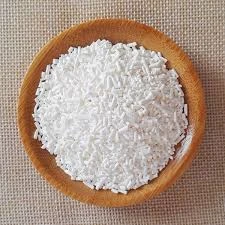
Green Solvents
Green Solvents The Future of Sustainable Chemistry
In recent years, the growing concern over environmental degradation has led to a paradigm shift in various industries, particularly in chemical manufacturing. One of the most promising developments in this field is the rise of green solvents. Unlike traditional solvents that can be harmful to both human health and the environment, green solvents are designed to be more sustainable, biodegradable, and non-toxic, thereby offering a safer alternative for industrial applications.
Traditional solvents, such as benzene, toluene, and chlorinated compounds, are notorious for their adverse effects, including air and water pollution, as well as serious health risks such as carcinogenicity and respiratory problems. The production and disposal of these solvents contribute significantly to ecological damage, necessitating the urgent need for alternatives. Green solvents emerge as a solution by minimizing or eliminating these hazards, aligning with the principles of green chemistry, which promotes sustainable and environmentally friendly practices.
Green solvents can be derived from renewable resources, such as plant oils, sugars, and other biomass. For instance, ethyl lactate, derived from lactic acid, is a biodegradable solvent that has gained popularity in various applications, including paint removers and cleaning products. Furthermore, solvents like glycerol and dimethyl sulfoxide (DMSO) have shown significant potential due to their low toxicity and environmental compatibility.
green solvents

The advantages of green solvents are manifold
. They not only reduce the environmental impact of chemical processes but also enhance the safety of workers, leading to improved occupational health. The use of these solvents can also increase the efficiency of chemical reactions, often resulting in higher yields and reduced energy consumption. Additionally, with stricter regulations surrounding the use of hazardous substances, the adoption of green solvents can provide a competitive advantage for businesses that prioritize sustainability.Despite the clear benefits, the widespread adoption of green solvents faces certain challenges. Many traditional processes are deeply embedded in industry practices, making the transition difficult and costly. Furthermore, there can be concerns regarding the performance of green solvents in comparison to their traditional counterparts, particularly in highly specialized applications. Research and development continue to play a critical role in overcoming these hurdles, with ongoing advancements in the synthesis and application of green solvents.
In conclusion, green solvents represent a significant step towards achieving sustainable practices in the chemical industry. By replacing hazardous traditional solvents with safer, eco-friendly alternatives, we can mitigate environmental damage and safeguard human health. The future of chemistry lies in the successful integration of these innovative materials, paving the way for a cleaner and greener planet. As we strive for sustainability, embracing green solvents is not just an option; it is a necessity for a healthier world.
-
Understanding Synthetic Rubber OptionsNewsApr.27,2025
-
Trichloroisocyanuric Acid: Essential for Clean and Safe WaterNewsApr.27,2025
-
Sodium Dichloroisocyanurate: Key to Safe Water TreatmentNewsApr.27,2025
-
Sodium Acid Pyrophosphate: Essential in Modern Food ProcessingNewsApr.27,2025
-
Essential Water Treatment ChemicalsNewsApr.27,2025
-
Denatured Alcohol and Its Industrial UsesNewsApr.27,2025
-
The Versatile Uses of Sodium BicarbonateNewsApr.24,2025
Hebei Tenger Chemical Technology Co., Ltd. focuses on the chemical industry and is committed to the export service of chemical raw materials.
-

view more DiethanolisopropanolamineIn the ever-growing field of chemical solutions, diethanolisopropanolamine (DEIPA) stands out as a versatile and important compound. Due to its unique chemical structure and properties, DEIPA is of interest to various industries including construction, personal care, and agriculture. -

view more TriisopropanolamineTriisopropanolamine (TIPA) alkanol amine substance, is a kind of alcohol amine compound with amino and alcohol hydroxyl, and because of its molecules contains both amino and hydroxyl. -

view more Tetramethyl Thiuram DisulfideTetramethyl thiuram disulfide, also known as TMTD, is a white to light-yellow powder with a distinct sulfur-like odor. It is soluble in organic solvents such as benzene, acetone, and ethyl acetate, making it highly versatile for use in different formulations. TMTD is known for its excellent vulcanization acceleration properties, which makes it a key ingredient in the production of rubber products. Additionally, it acts as an effective fungicide and bactericide, making it valuable in agricultural applications. Its high purity and stability ensure consistent performance, making it a preferred choice for manufacturers across various industries.











